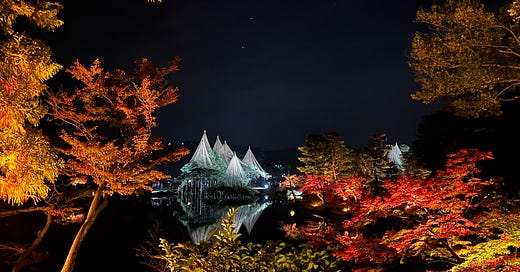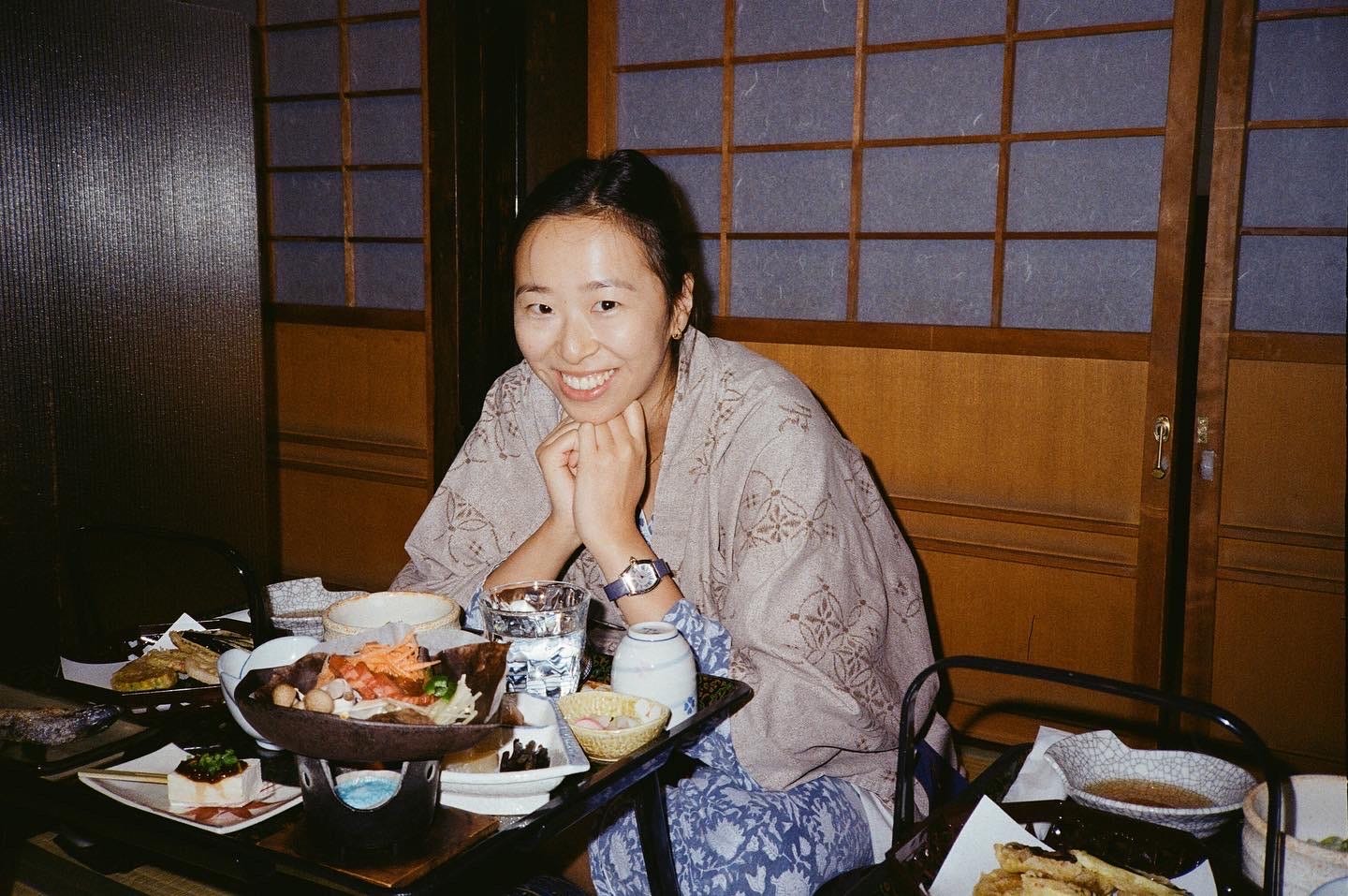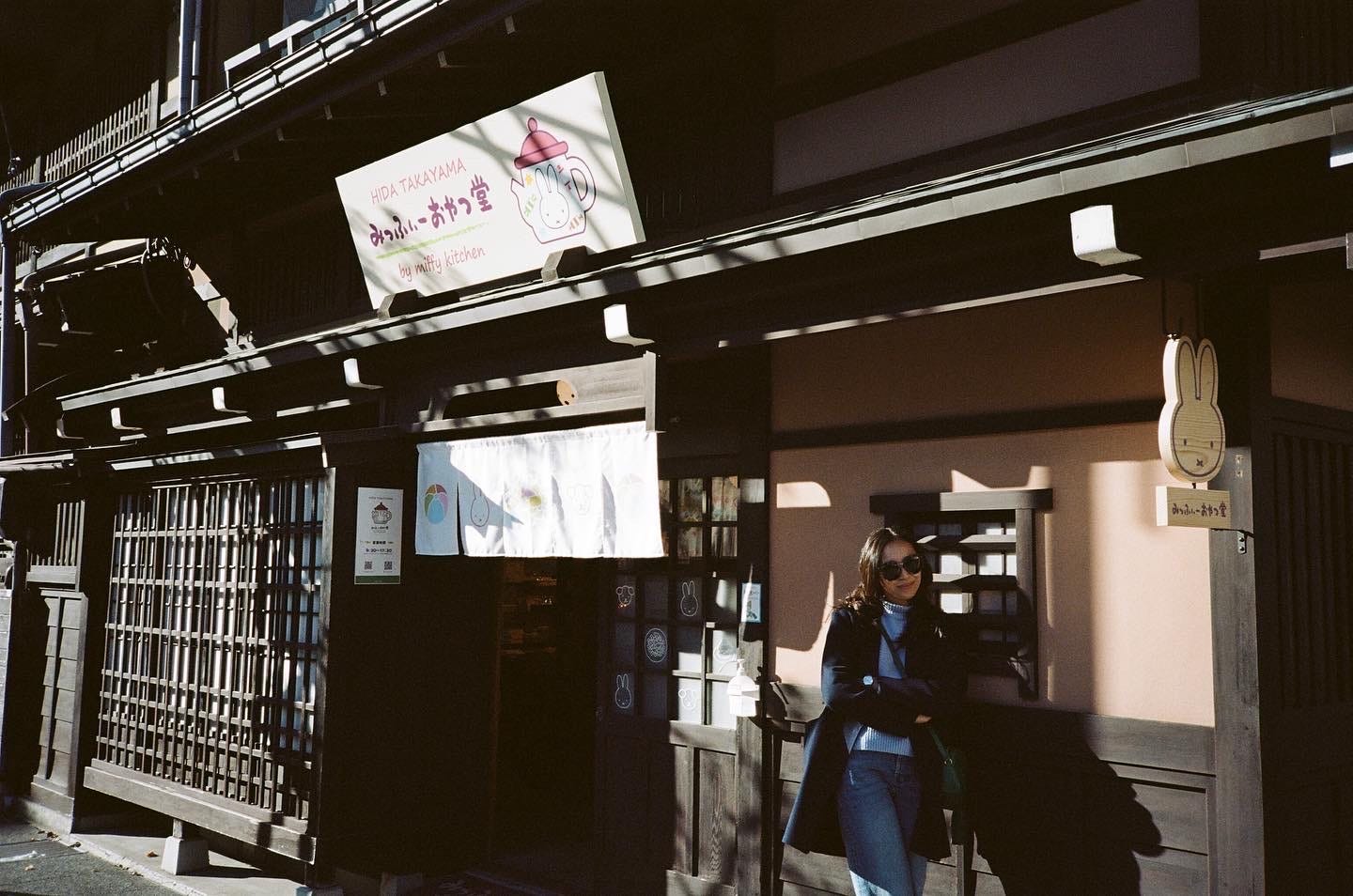5 Day Itinerary: Kanazawa, Takayama & Shirakawa-go
There's places other than Tokyo, Kyoto and Osaka!
After your first or second time to Japan, chances are that like me, you’ll be wanting to venture out of the usual Tokyo - Osaka - Kyoto tourist track and see another side to Japan. Let me introduce you to the lesser-known trifecta of Kanazawa, Takayama & Shirakawa-go.
Kanazawa is a castle town rich with history and culture, and is therefore often described as a less congested version of Kyoto. I find this assessment rather reductive - there is a distinctly inimitable quality to Kanazawa, with its immaculately preserved geisha teahouse districts, celebrated landscape garden and imposing castle.
The historic charm continues in Takayama, which is a beautifully preserved old town located up in the mountainous Hida region. Come for the rural tranquillity, stay for the most delicious beef you’ll ever have - Hida beef is a type of wagyu meat from a special breed of black cattle and is among the best in the world. Despite it being relatively unknown compared to its Kobe counterpart, I maintain that the best beef I’ve ever had, and ever will have, was in Takayama.
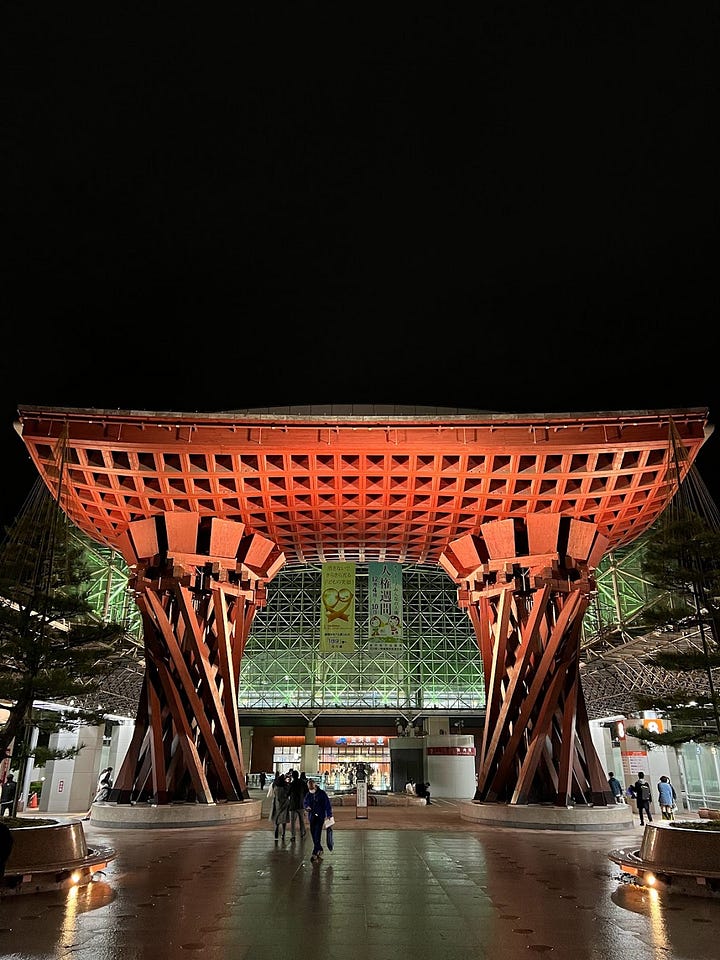
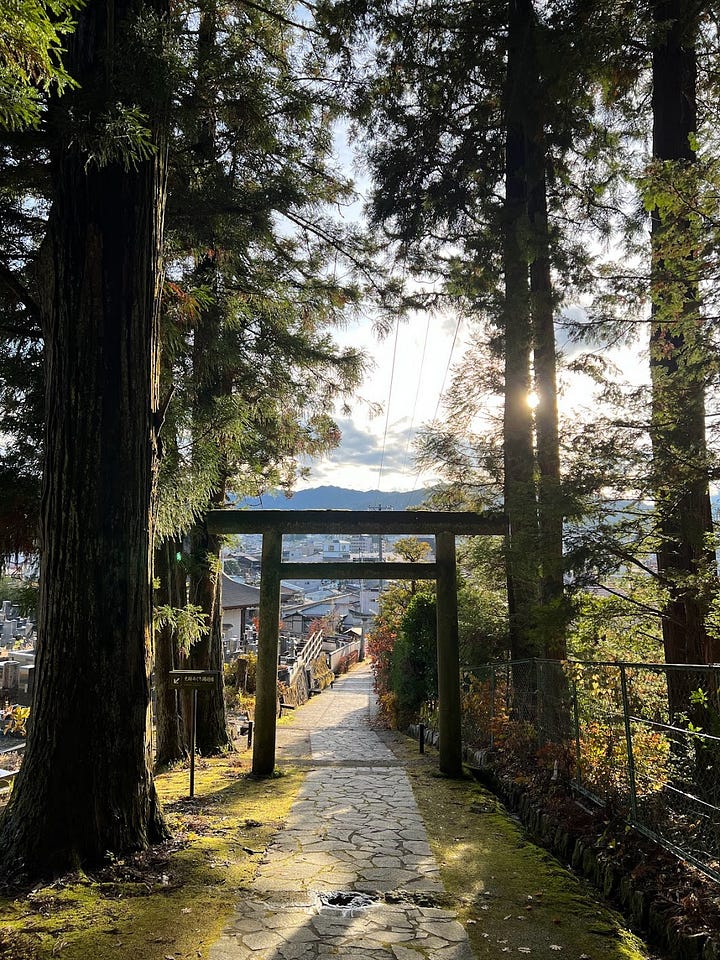
Finally, enjoy an overnight stay at a traditional gassho-zukuri, or farmhouse in the UNESCO world heritage site that is Shirakawa-go. The unique architectural style of steeply thatched roofs on the 250-year old houses evoke hands pressed together in prayer, and it is this dedication to preserving tradition that draws crowds of visitors to this gorgeous place.
This 5-day itinerary can easily form part of a bigger trip to Japan - Kanazawa is easily reached by shinkansen from the major cities, so feel free to tack it on to this Tokyo / Kyoto / Osaka 2-week itinerary!
Day 1: Kanazawa
Day 2: Kanazawa
Day 3: Takayama
Day 4: Takayama / Shirakawa-go
Day 5: Shirakawa-go
Day 1: Kanazawa
Kanazawa is easily accessible via direct shinkansen from major cities including Tokyo and Osaka, so chances are that you will get to see the distinctive façade of Kanazawa Station upon arrival, with its spiral-structure gate looming above the main entrance.
From the station, it is a short 15-20 minute walk to Omicho Market, the largest fresh food market in the city and a real hub of activity with hundreds of shops and restaurants. Iki-Iki Tei is a particularly popular stall here that specialises in kaisen-don, although the tiny shop size can make it difficult to get a seat.
We went for Mori Mori Sushi Omicho, which is a conveyer-belt sushi restaurant in the market with multiple branches across the city and Ishikawa prefecture more generally. This place is also incredibly popular, and for good reason - not only is it affordable, but the quality of the fish far exceeds that of any conveyer belt sushi I’ve tried in London (and in Tokyo as well for that matter).
You can grab a ticket and peruse the rest of the market while you wait for your table - we munched on croquettes, fresh fruit and some delicious wagyu sushi from a stall with a massive golden cow head poking out of the wall (you can’t miss it!)
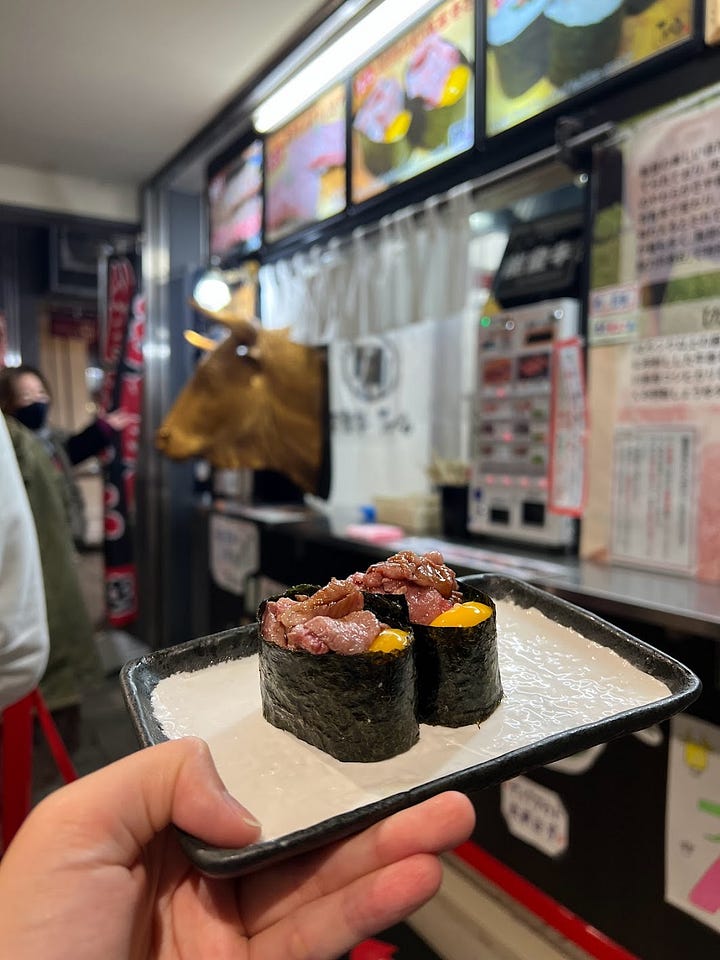
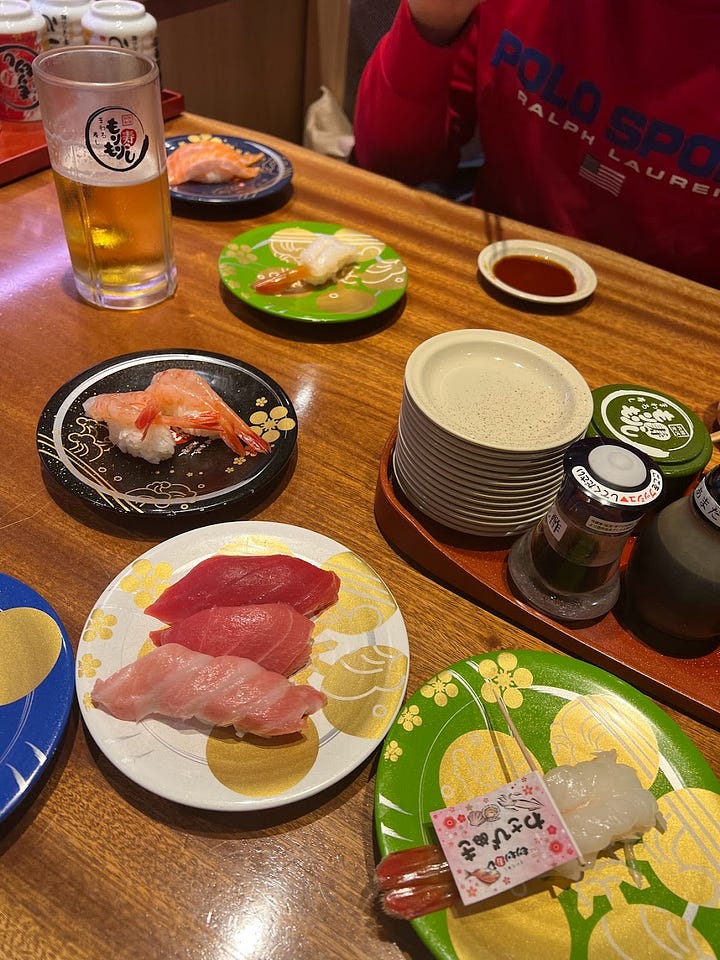
As dusk approached, we made our way to Kanazawa Castle Park, which is home to the Kanazawa Castle Ruins. This castle, like most others in Japan, has burned down several times over the centuries, and so a reconstruction project is now underway to restore its former buildings. While its distinct flatland-style means that it perhaps isn’t the most striking castle visually, its allure greatly increases after sunset every Saturday, which is when the night-time castle illuminations start (for the most up to date schedule, check the Kanazawa tourism website). Don’t miss the stunning Gyokusenin-maru landscape garden next door, which also lights up at night.
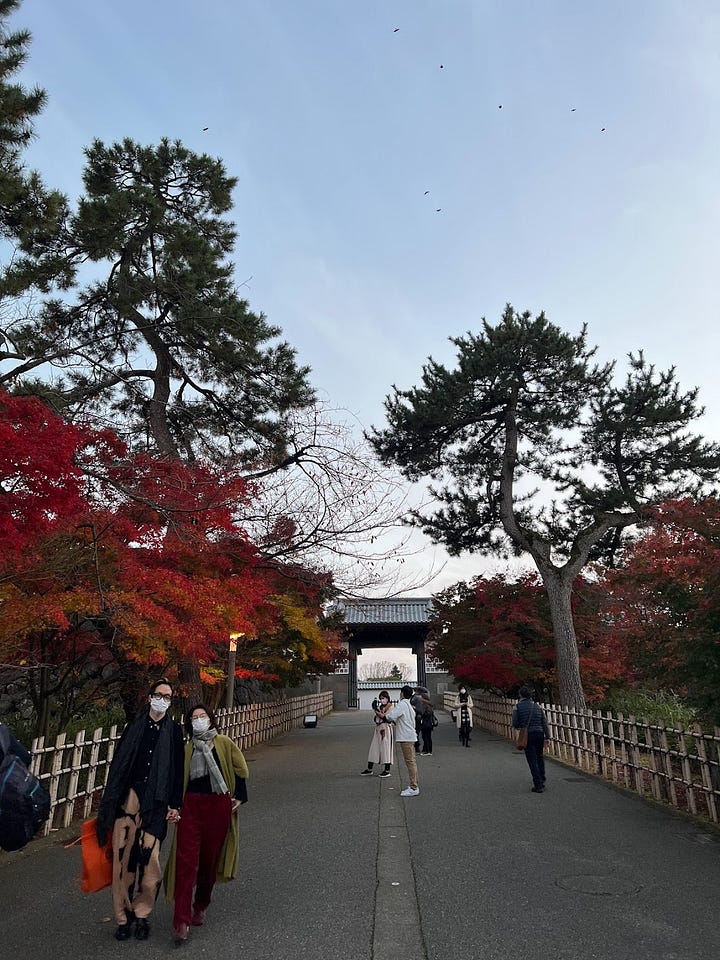
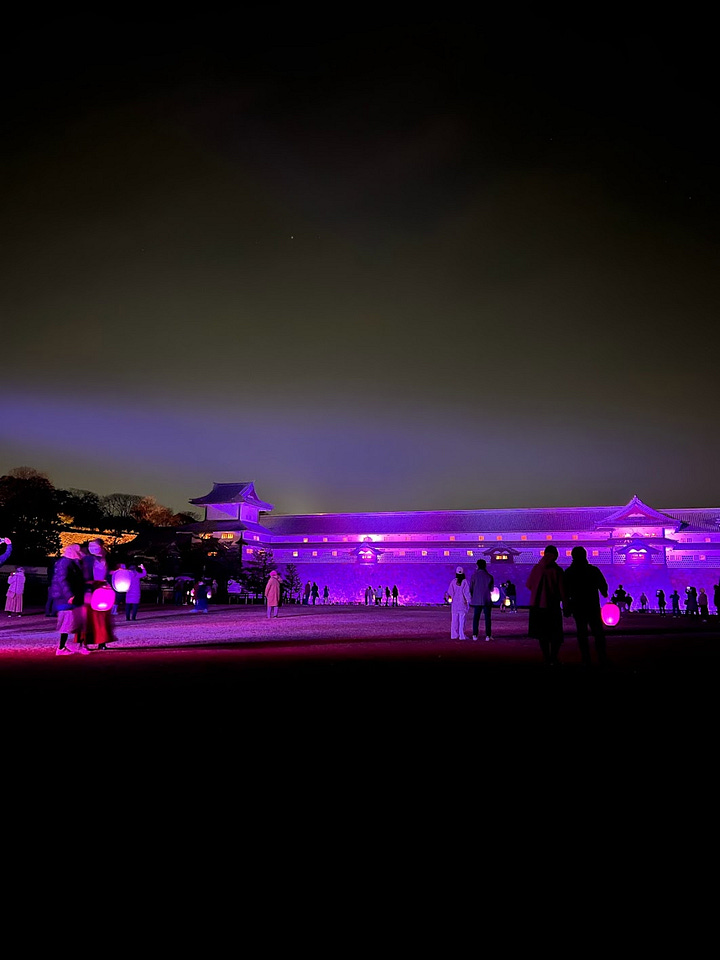
Just a stone’s throw from the castle park is perhaps Kanazawa’s most acclaimed attraction - Kenroku-en, which is rightly hailed as one of the “Three Great Gardens of Japan”. This is truly a place that can be enjoyed year-round, with plum and cherry blossoms blooming during spring, verdant greenery during summer, gorgeous foliage during autumn and snowfall during winter. We decided to visit after dark when their night-time illuminations were on (this is seasonal, so check the website for updates) and boy was this a treat for sore eyes.
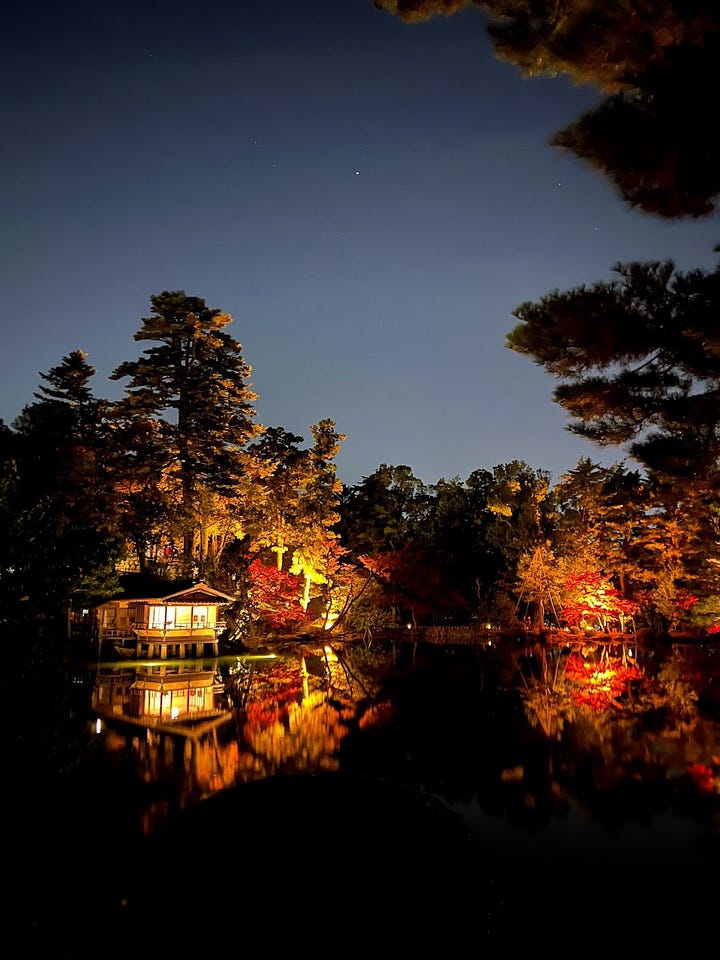

After marvelling at the garden, we went for a warming dinner at the Turban Curry Main Store. Like Mori Mori, this is a stalwart of Kanazawa with multiple branches serving up the city’s famous “black curry”, with its trademark deep hue almost akin to melted dark chocolate. While it’s not worlds apart from your standard Japanese curry flavour-wise, it’s definitely worth trying when in Kanazawa, and Turban Curry is renowned for doing it well at an affordable price.
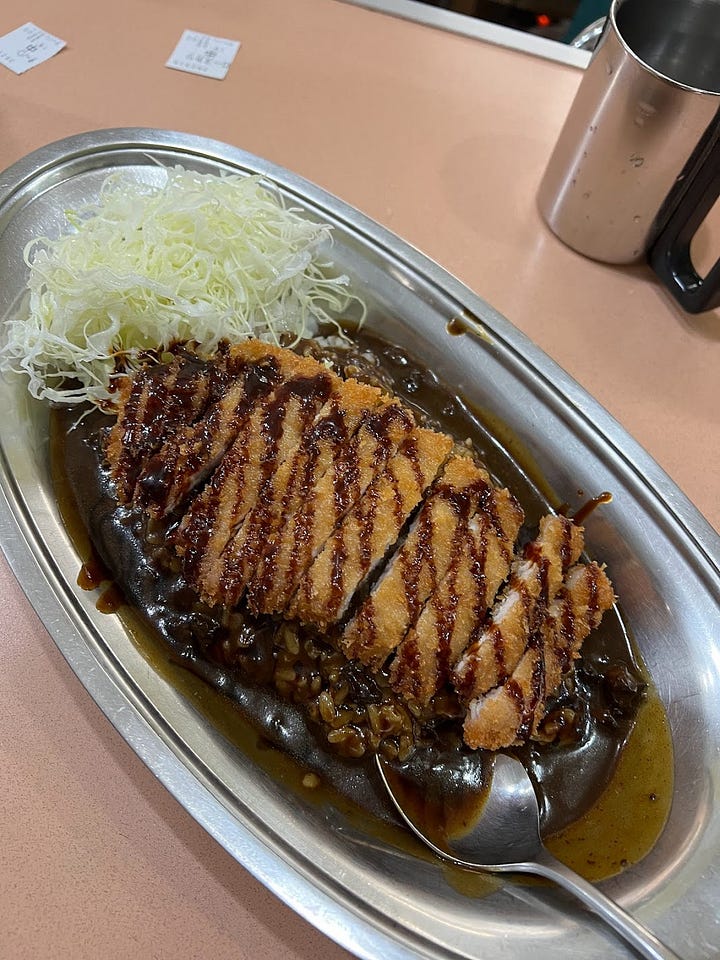
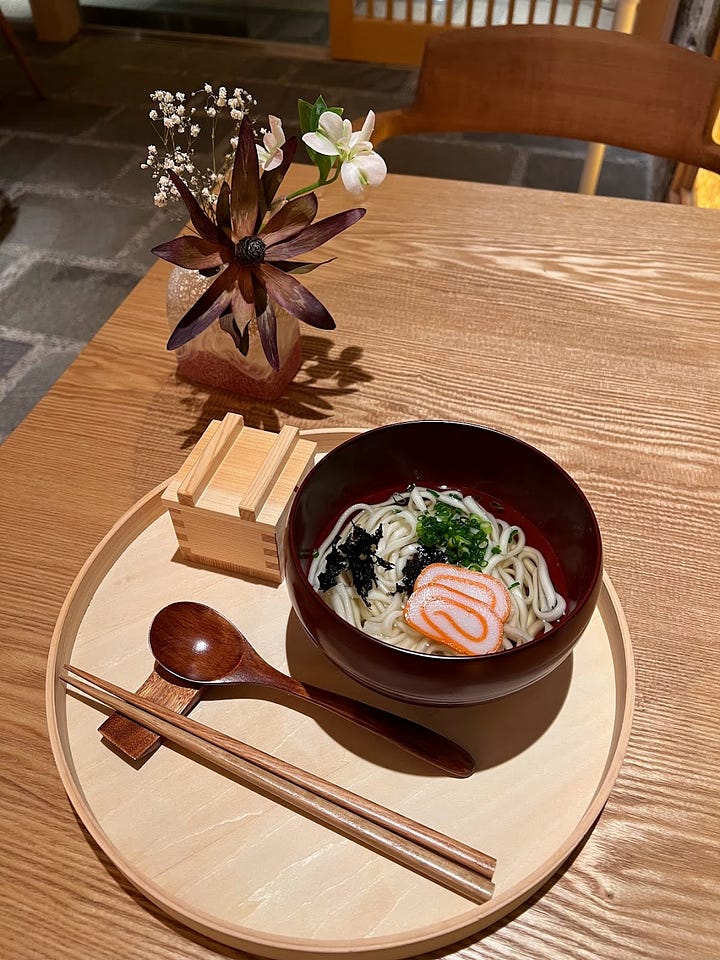
Where we stayed in Kanazawa
Hotel Kanazawa-Zoushi: this boutique hotel combines Western comfort with Japanese aesthetics, and is superbly located near Omicho Market. It comes with some unbeatable amenities and perks, such as free bowls of udon in the evenings and complimentary dango upon checking in. I would 100% stay here again!
Day 2: Kanazawa
The next morning, we set off towards Kanazawa’s most venerated neighbourhood - the Higashi Chaya district, which literally translates to eastern teahouse district. As the name suggests, this historic area is home to rows of preserved teahouses where geisha perform for their guests.
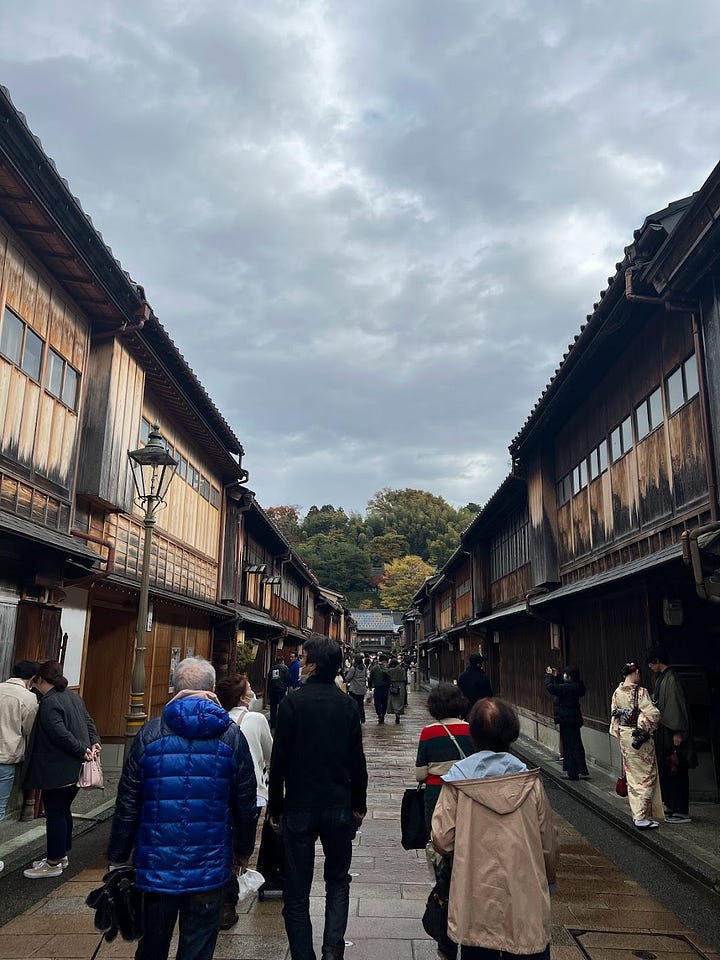
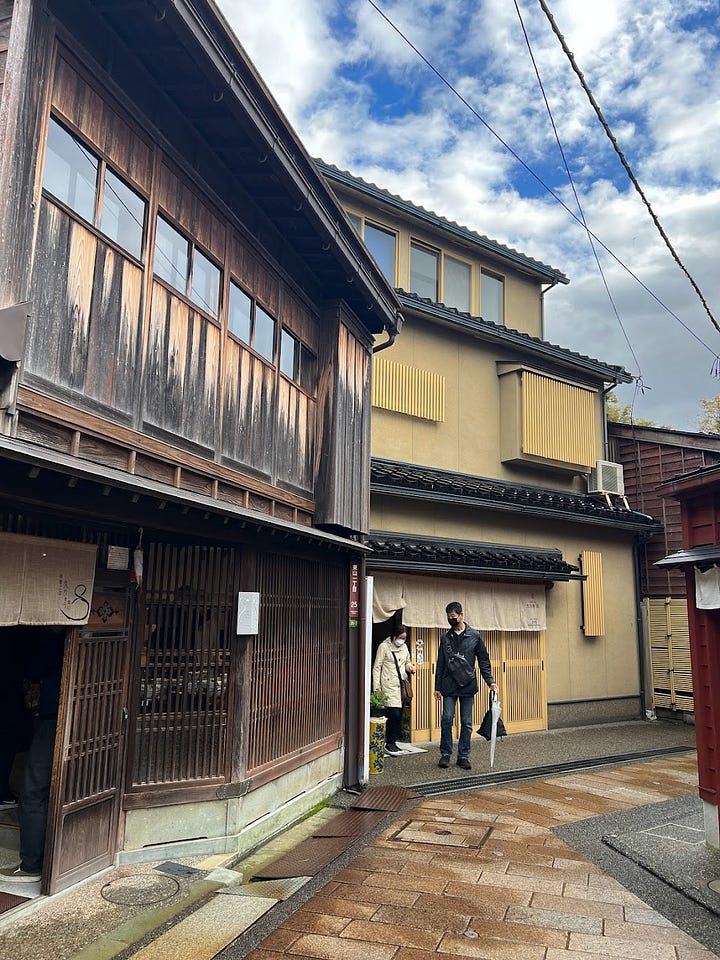
Two of these teahouses are open to the public, including Kaikaro which is famous for its tea room with gold-laced tatami mats. (Side note - gold will be a recurring motif in Kanazawa, given that the city has historically been Japan’s production hub for gold leaf). I would highly recommend exploring this teahouse - it truly transports you to another world, with its richly decorated rooms and beautiful red lacquered stairs. After you’ve looked around the house, you can indulge in a delicious matcha parfait in the cafe on site, which of course is topped with thinly beaten gold sheets for that extra touch of drama.
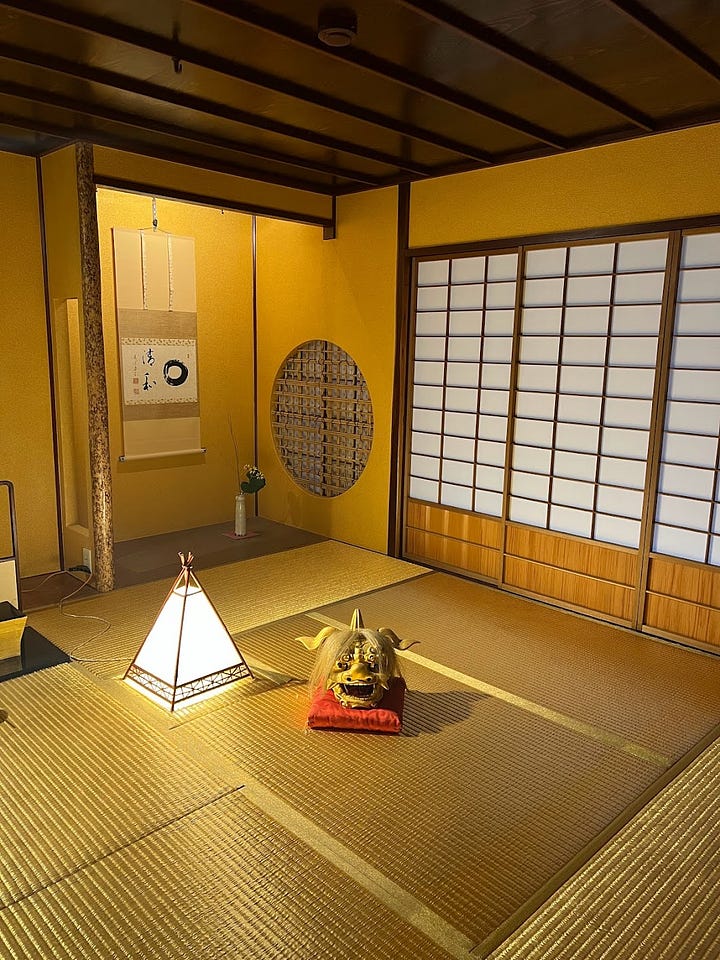

You can spend an entire morning wandering round this picturesque district, since there are so many restaurants, cafes and shops dotted in and among the teahouses. I had Jiyuken, Chaya&Bar Gauche and Sabo Issho saved to my maps as places to eat / drink at, but the prohibitively long queues meant that we ended up sneaking back to Omicho Market for lunch instead. The Kanazawa Yasue Gold Leaf Museum is also in the Higashi Chaya district for those interested, but we chose to just duck into the adjacent Kinpakuya Sakuda Gold Leaf Shop & Workshop, which also offers the opportunity to create your own gold leaf crafts (pre-booking required).
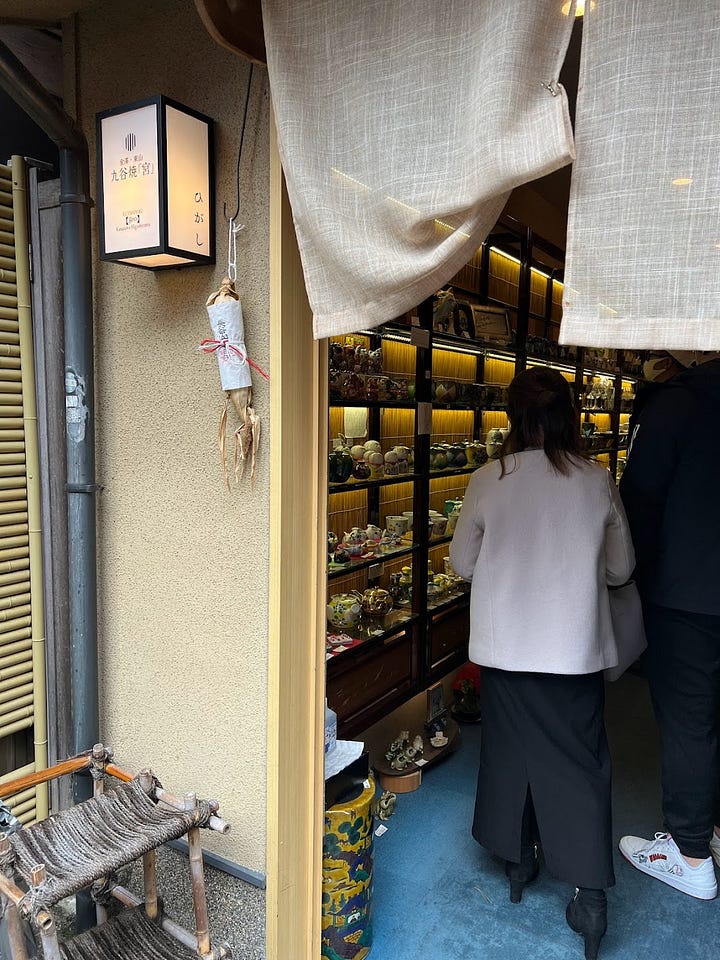
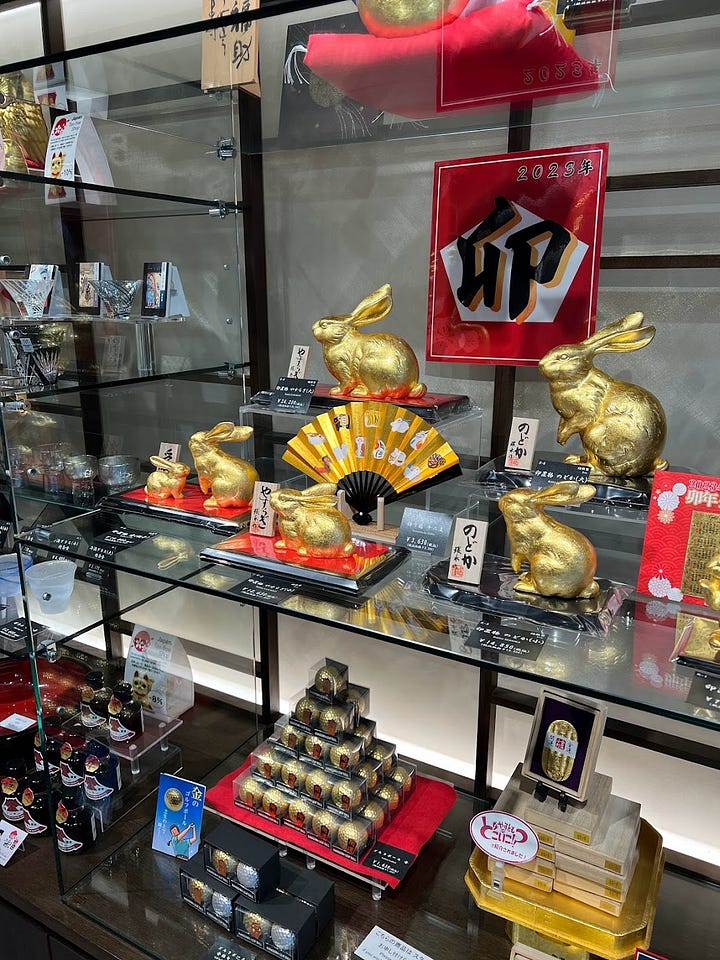
After lunch, we crossed the city to reach Myouryuji, a.k.a the Ninja Temple, so named because of its trap doors, hidden rooms, secret passageways and false exterior that makes it look like a two-story building (it is actually four stories, with a concealed watchtower!) Myouryuji was built as secret military outpost in the 17th century to defend Kanazawa Castle from attack, and is well worth visiting - you have to reserve a space on a guided tour, which is unfortunately all in Japanese, although you do get a pamphlet with information about the temple in English.
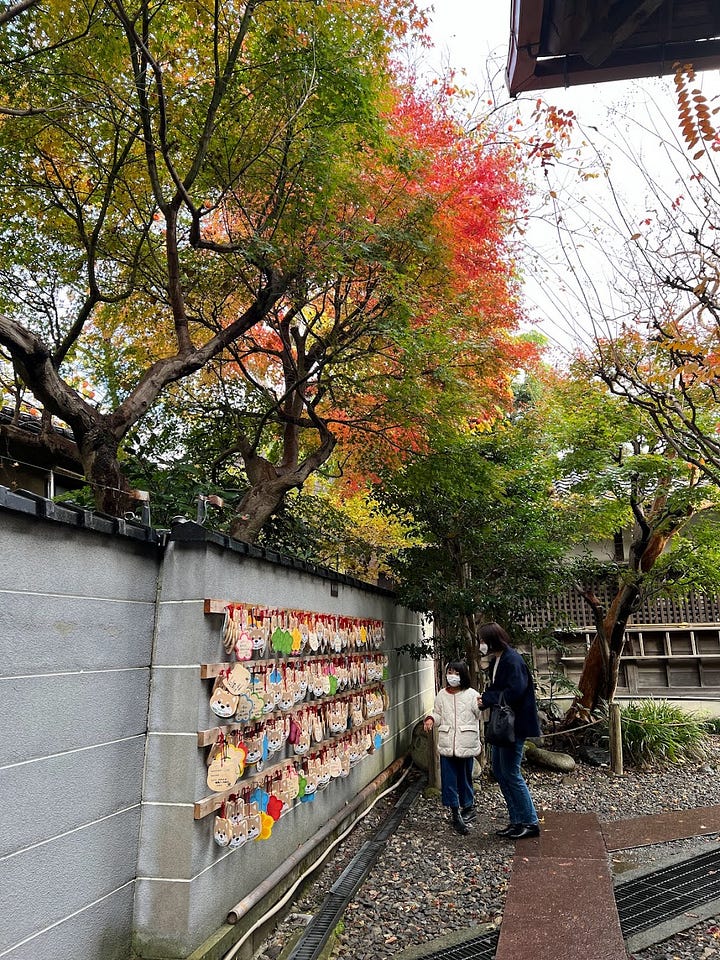
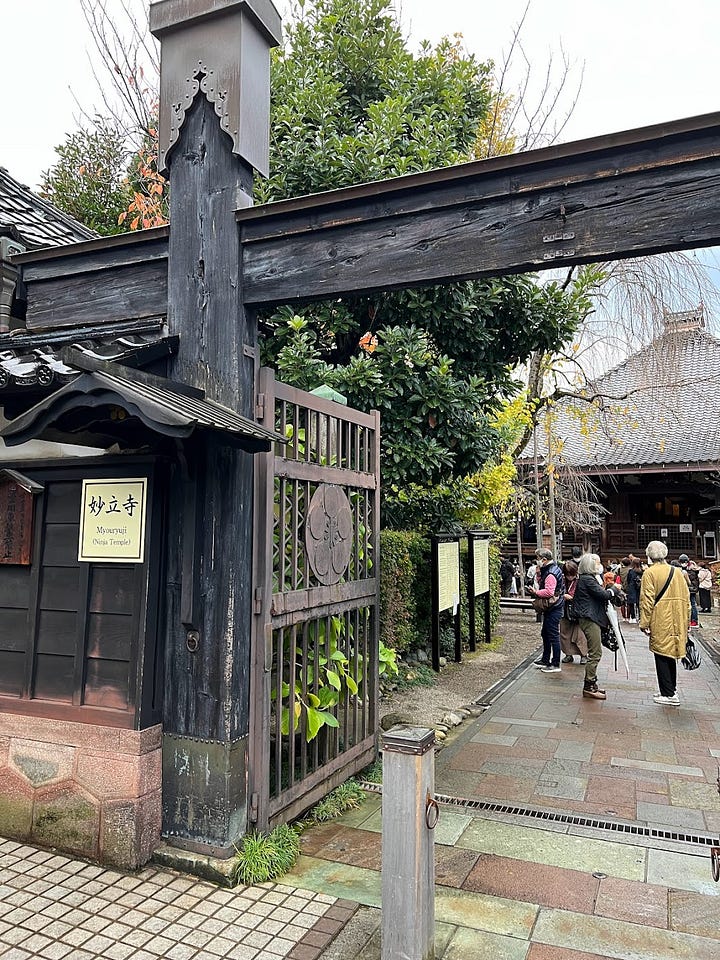
The Nishi Chaya District that Myouryuji is located in is a lot sparser than its eastern counterpart, so I wouldn’t necessarily go out of your way to explore this area - when we visited, most shops were shut. We didn’t quite make it in time to visit the Nomura-ke Samurai Residence before it shut, but we did enjoy a peaceful walk around the Nagamachi District that features former samurai homes and cobblestone streets for an immersive taste of Edo-period Japan.
After browsing the shopping malls in the Katamachi area, we went back to Mori Mori for dinner (mainly because other places were shut) and scarfed down plates of delicious sushi before retiring to bed. Kanazawa had fully indulged my desire to steep myself in old world Japanese tradition, craft and architecture, and now it was time to ascend into the mountains.
Day 3: Takayama
The kanji for Takayama literally means “tall mountain”, which should give you some clue as to the city’s topography. It’s only about 1 hour 45 minutes’ drive from Kanazawa, and yet you instantly feel that you are someplace else, with a more rural, tranquil quality about it.

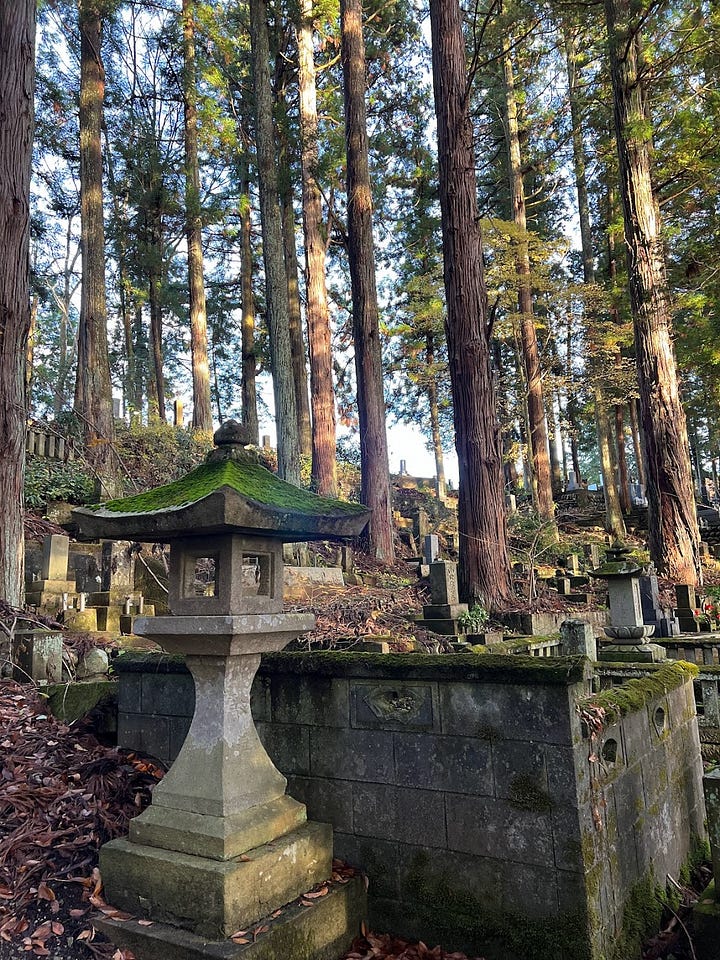
You can’t visit this part of the world without trying the legendary Hida beef, which I still dream about to this day. My partner and I maintain that we have never had beef so good since - not in fancy steakhouses or Korean BBQ joints or Michelin-starred restaurants. This prized wagyu variety has beautiful marbling that just makes the meat melt-in-your-mouth perfect without compromising on its subtly sweet, mellow flavour. So of course, as soon as we rolled into Takayama at around lunchtime, we headed straight for Hidagyu Maruaki, a popular local spot with a butcher’s attached to it that specialises in Hida beef.
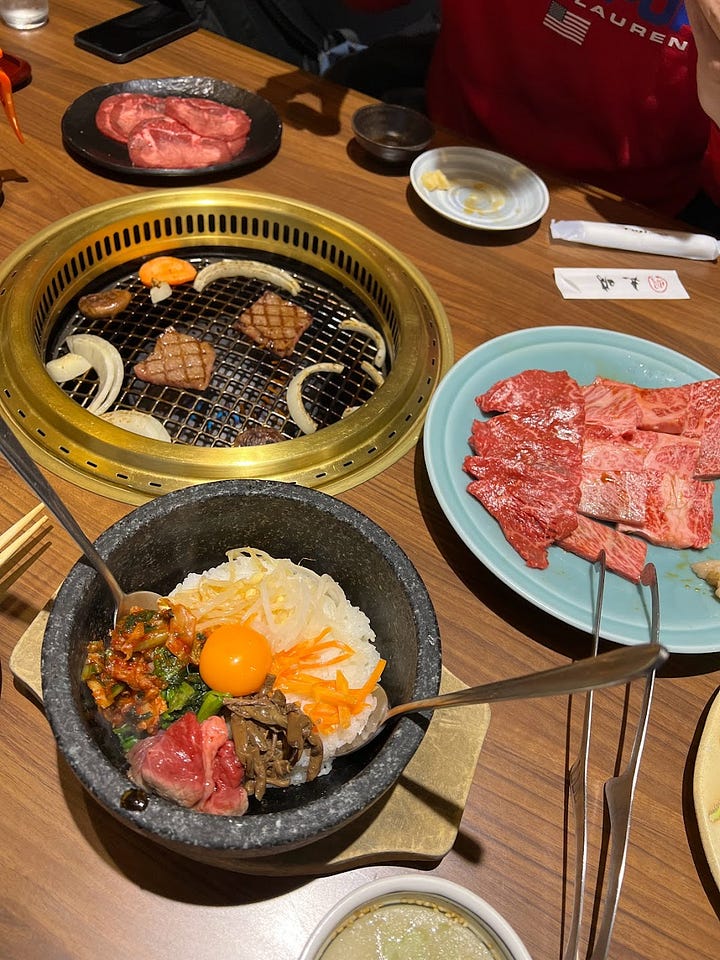
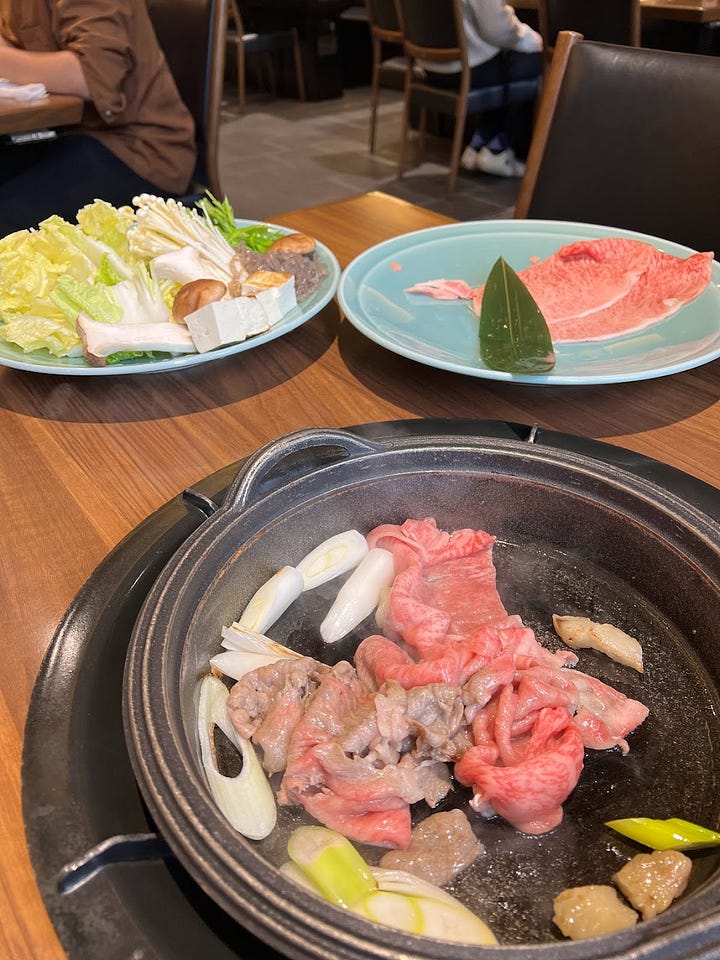
You can choose to have your beef shabu-shabu (hotpot), sukiyaki (simmered in subtly sweet broth) or yakiniku (grilled barbecue) style, and we decided to go for the most purist method - yakiniku. It was complete heaven, and we ended up going back to the restaurant for lunch the next day to try their sukiyaki, which was just as good (if not better in my eyes!)
After our delicious meal, we headed into Takayama Old Town. This historic district is beautifully preserved with feudal-era homes, and the rickshaw drivers and vermilion bridges running across the Miyagawa River only add to the idyllic atmosphere.
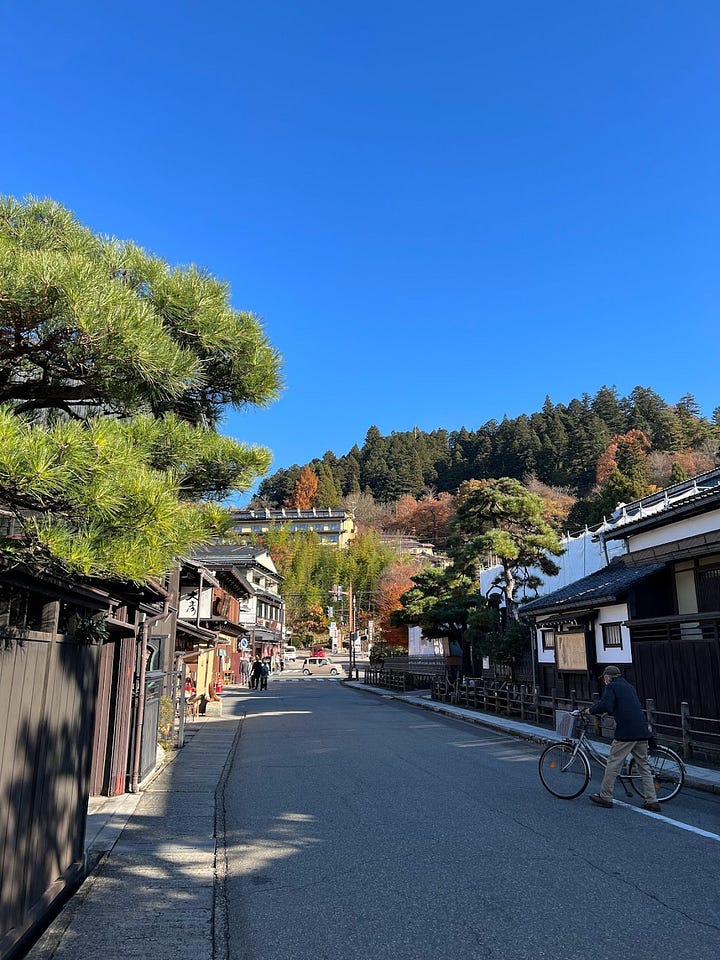
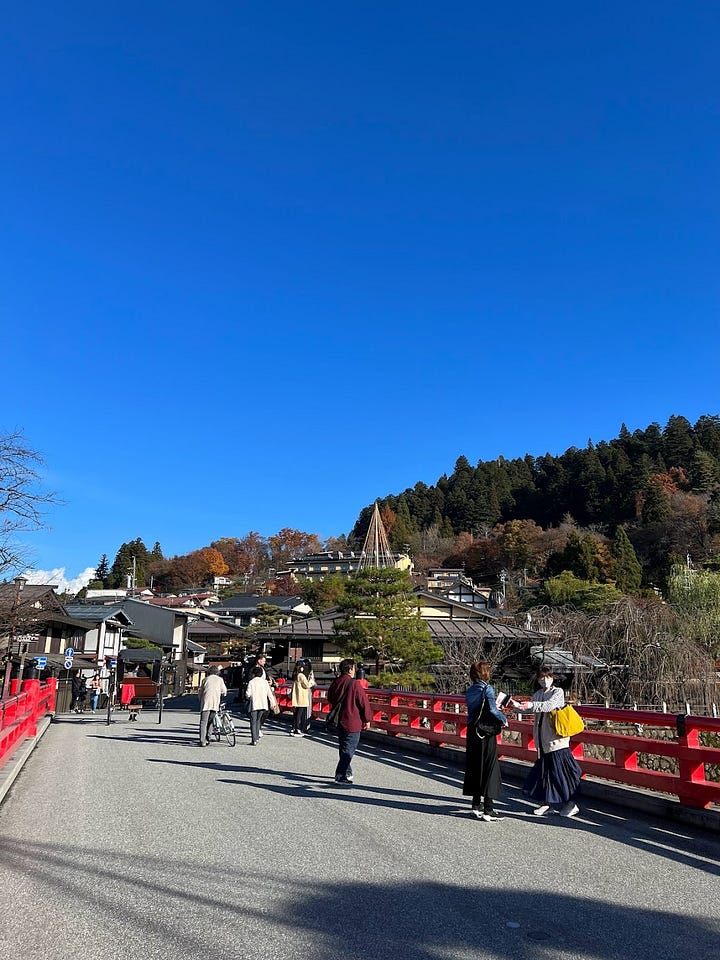
We followed the river down a short distance to reach Takayama Jinya, the former local government office of the ruling Tokugawa shogunate, now open to the public as a museum. While it might not sound like the most thrilling attraction on paper, I’d actually highly recommend a visit - the complex is huge but painstakingly maintained, and it’s by walking through the various rooms and gardens that you’re allowed a real immersive insight into Edo-period daily life and governance.
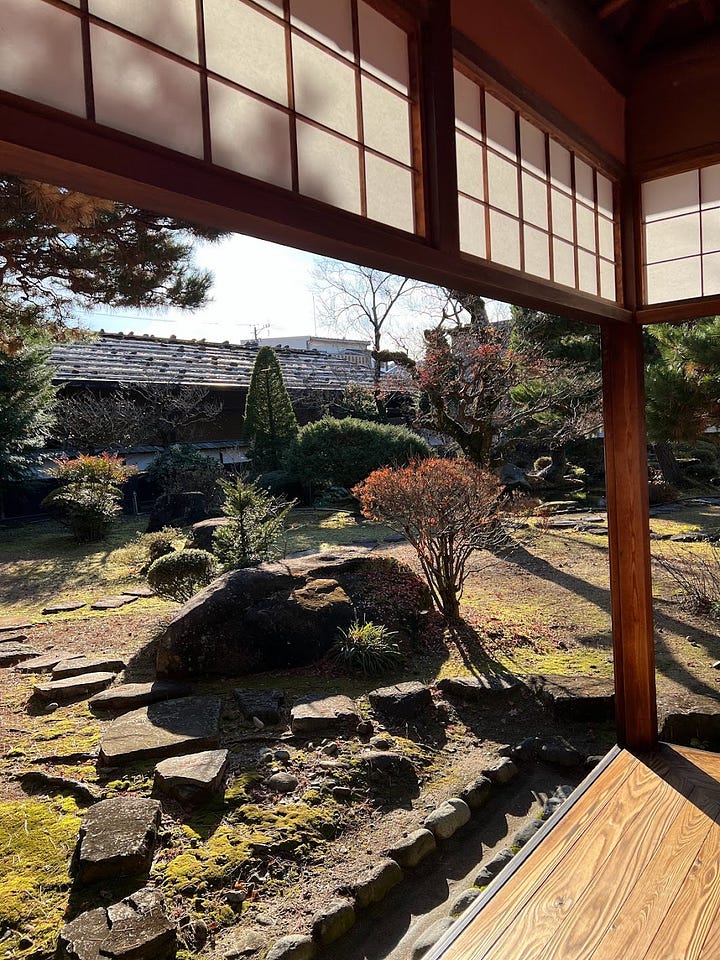
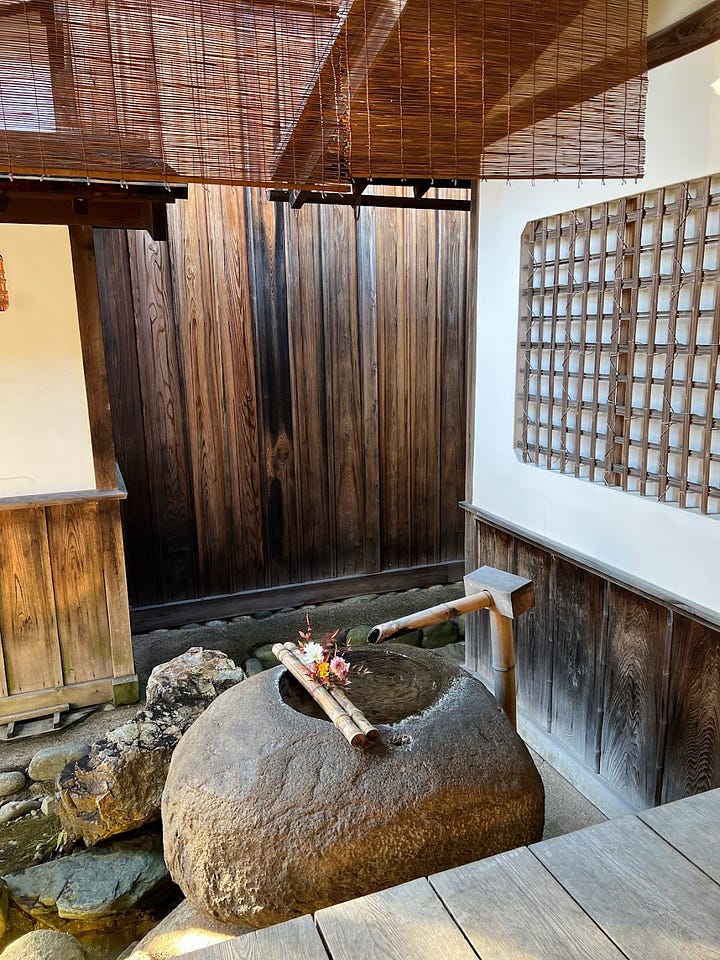
If there’s only one thing you do in Takayama (besides eat Hida beef), you should definitely make it the Higashiyama Walking Course that winds through the city’s temple district, rural suburbs and former castle park via clear signposts. It’s an easy 1-2 hour stroll which allows you to enjoy wonderfully picturesque views no matter the season, and it was easily my personal highlight of Takayama.
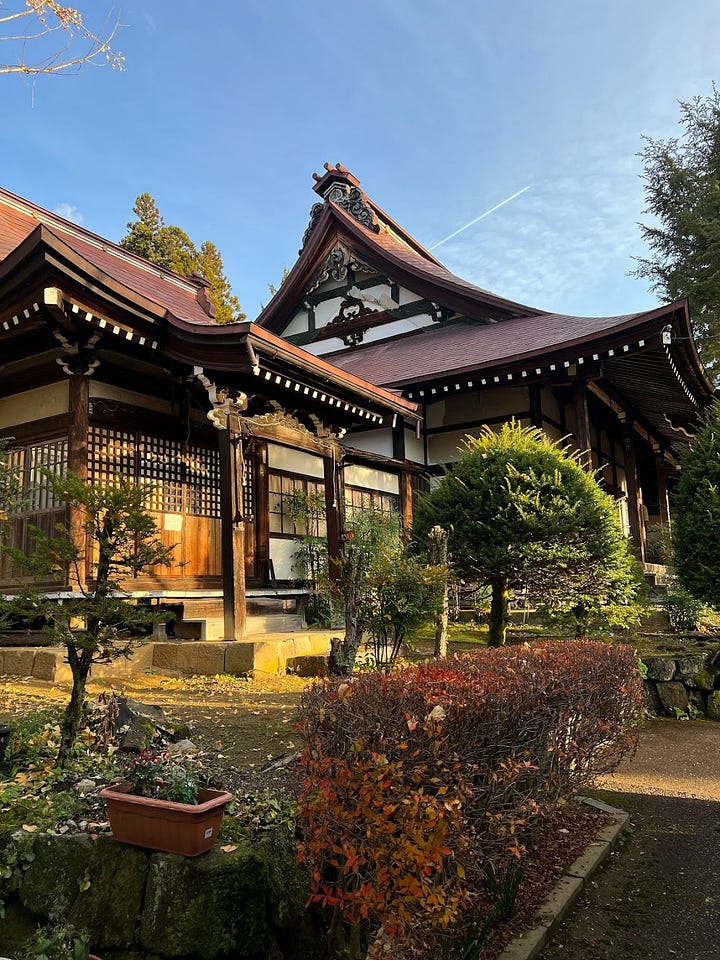
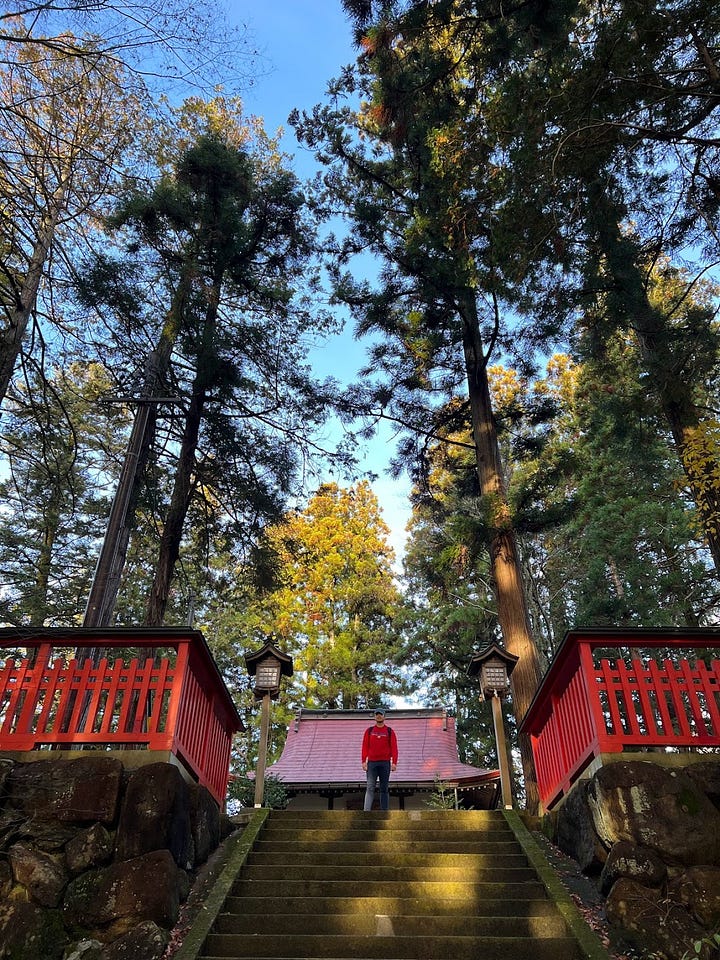
For dinner, we popped into a hole-in-the-wall Chinese-style ramen shop called Nakatsubo, which was warming and hearty but ultimately nothing exceptional. We then headed back to our hotel for a pre-bed soak in the onsen to round off what could only be described as a restorative day in one of Japan’s nicest old towns.
Where we stayed in Takayama
Oyado Koto no Yume: This traditional ryokan with tatami floors and thick futons in spacious rooms encourages you to enjoy the best of Japanese tradition and hospitality. From the yukata provided for you to wear (which the staff are more than happy to help you with) and the onsen that you can soak in before bed, this is one of the best ryokan I’ve stayed in when it comes to service, amenities and value for money.
Day 4: Takayama / Shirakawa-go
For our last morning in Takayama, we got back into our rental car and drove to the Hida Folk Village, otherwise known as Hida no Sato on the outskirts of the city. We spent the whole morning exploring this vast and immersive open-air museum that exhibits over 30 traditional Hida-style houses from the Edo period.
The buildings have been painstakingly preserved, with interiors exhibited to highlight the resilience, innovation and craftsmanship that upheld Hida village life centuries ago. They also all feature the famous gassho-zukuri sloping thatched roofs also seen in Shirakawa-go, reminiscent of hands coming together in prayer.
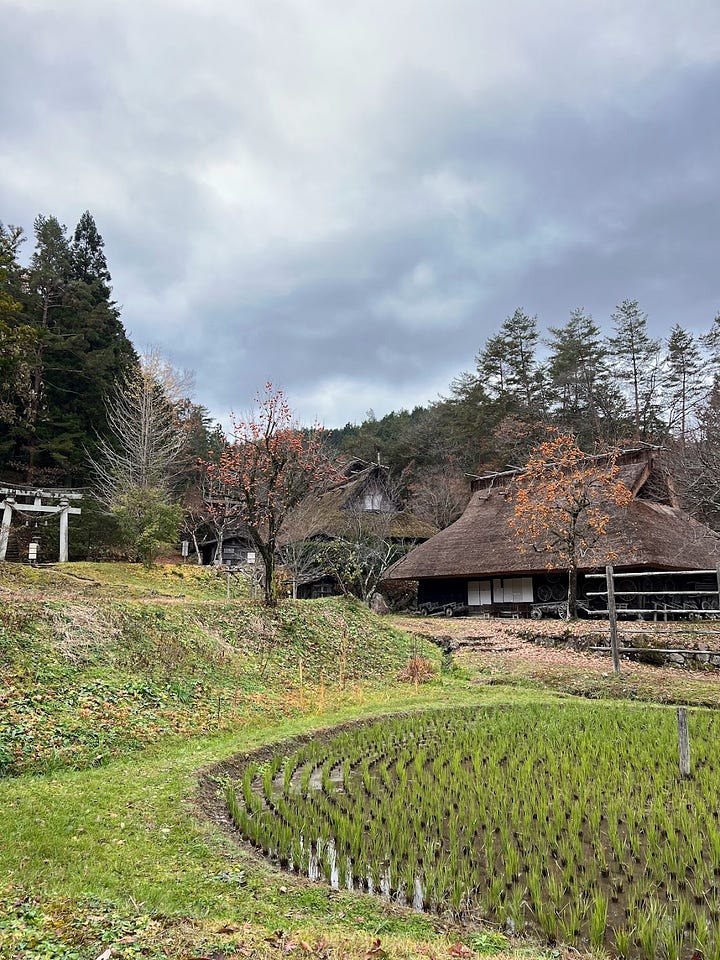
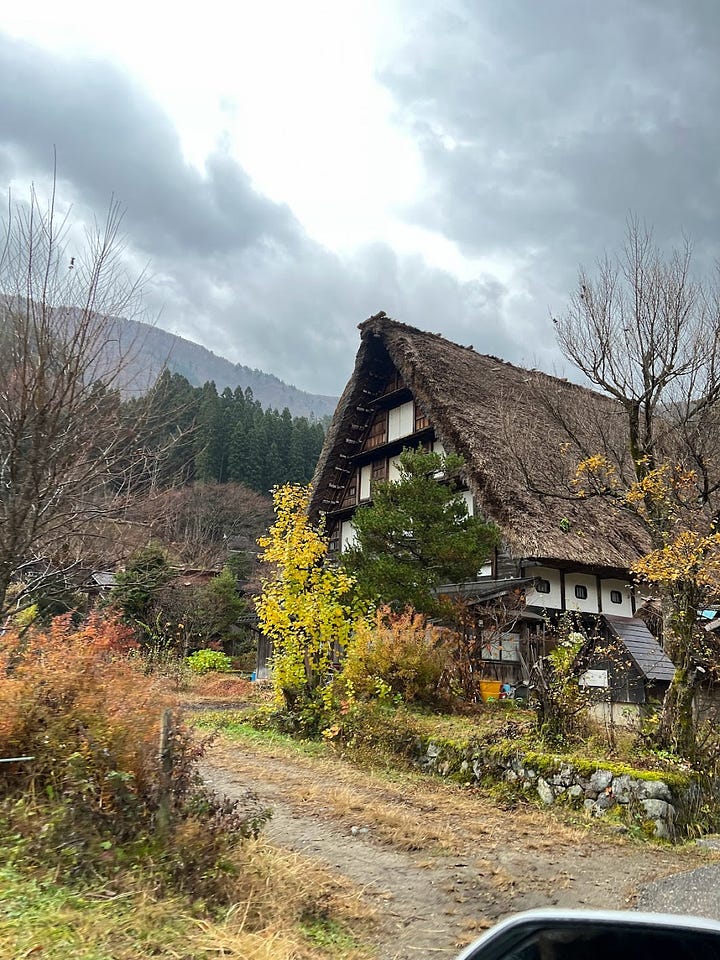
On our way out of Takayama, we stopped by Risu no Mori, or Squirrel Forest, where you can get up close to various different species of squirrel and feed them out of your hands with seeds you buy on-site. These aren’t the rat-like grey squirrels that dominate London’s parks - rather, these Japanese and Korean species often look like they’ve sprung out of Snow White. I would say that this is probably a filler activity rather than an essential stop though.
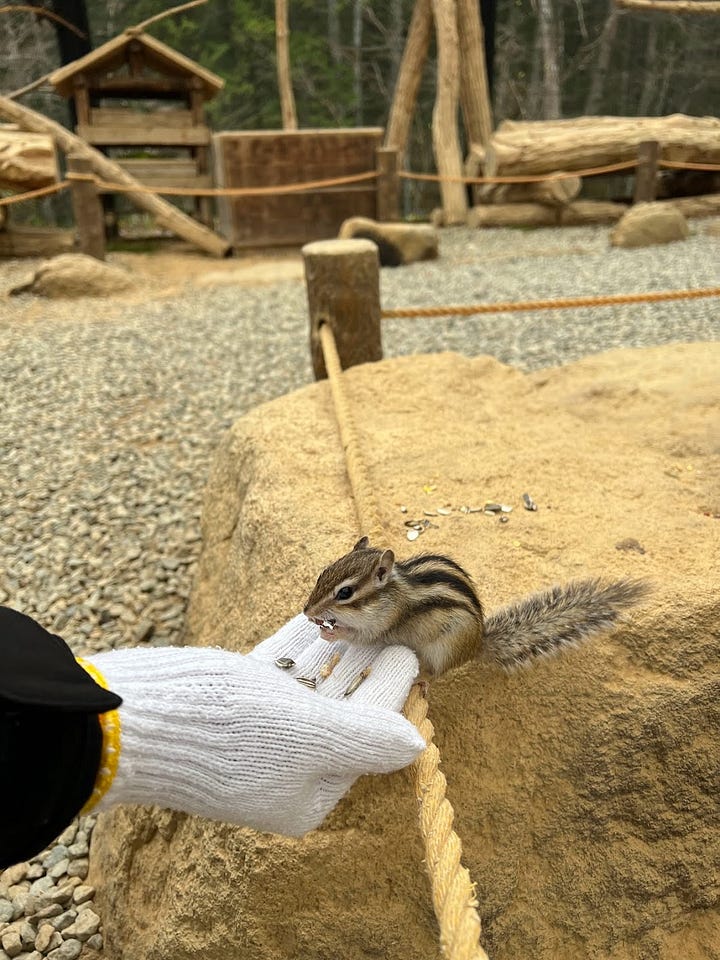
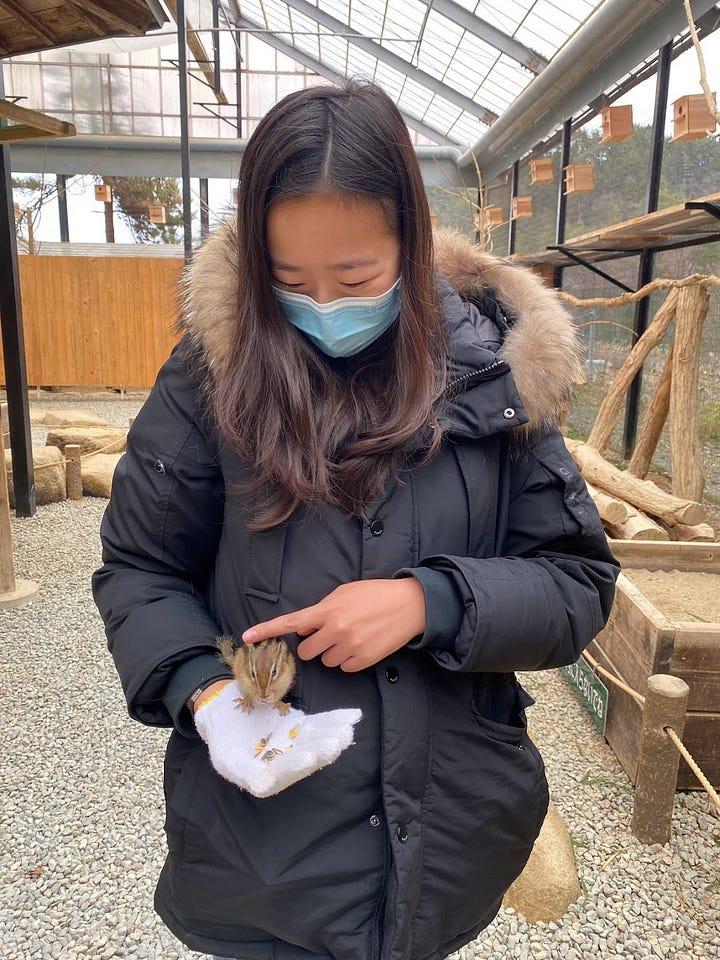
After just under an hour of driving, we arrived at Shirakawa-go, the UNESCO World Heritage Site home to centuries-old gassho-zukuri structures. They are the main attraction, and one of the best places to see them all at once after wandering the village on the ground is from the Ogimachi Castle Observation Deck, which is only a short walk uphill. Wada House is one of the gassho-zukuri that is open to the public, with exhibits similar to Hida no Sato showcasing how people lived during the Edo period.
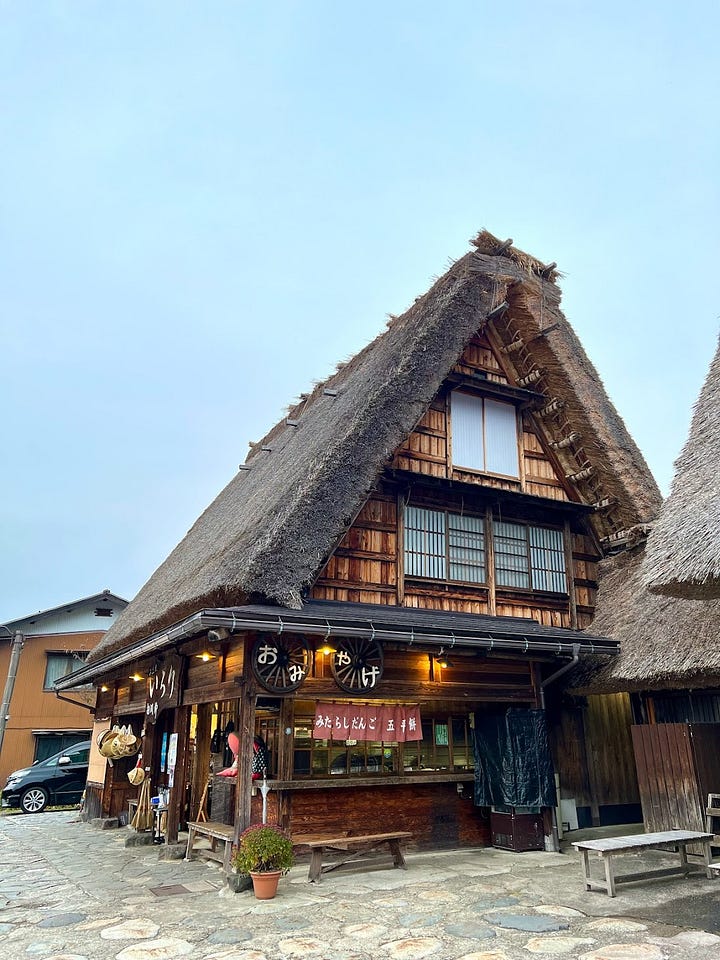
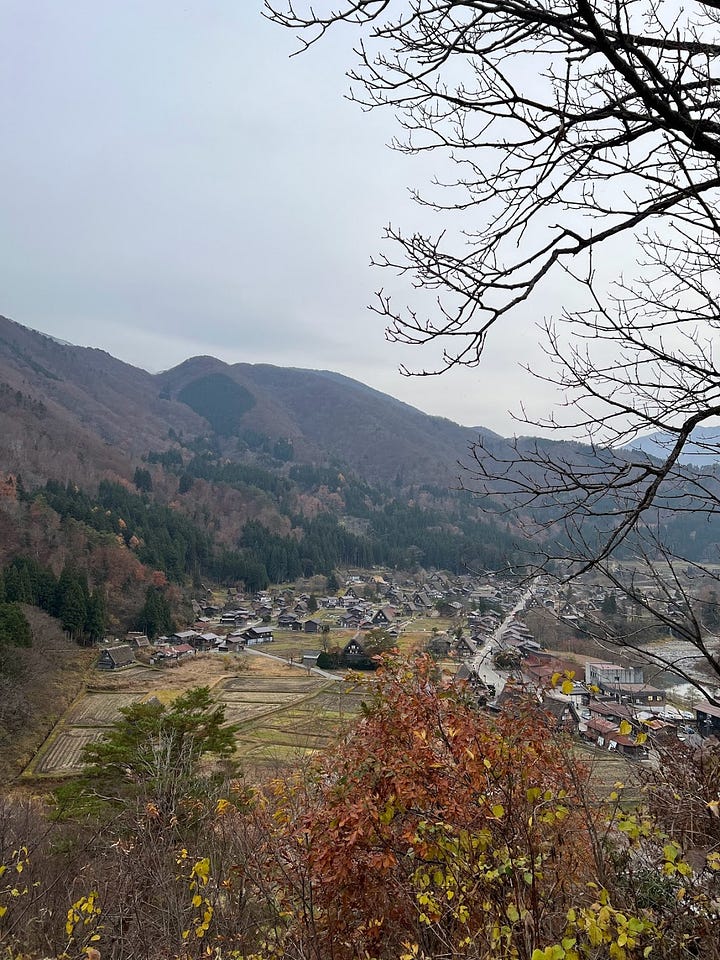
Shirakawa-go isn’t very large, and shops / restaurants all close pretty early in this very rural, quiet village. This means that the only activity available to most people who are staying after dusk is dinner at their overnight accommodation, which will presumably be a traditional minshuku (Japanese B&B) stay in one of the gassho-zukuri houses. This is an experience unique to this corner of Japan, and is worth trying for those seeking true seclusion, tranquillity and old-school Japanese hospitality.
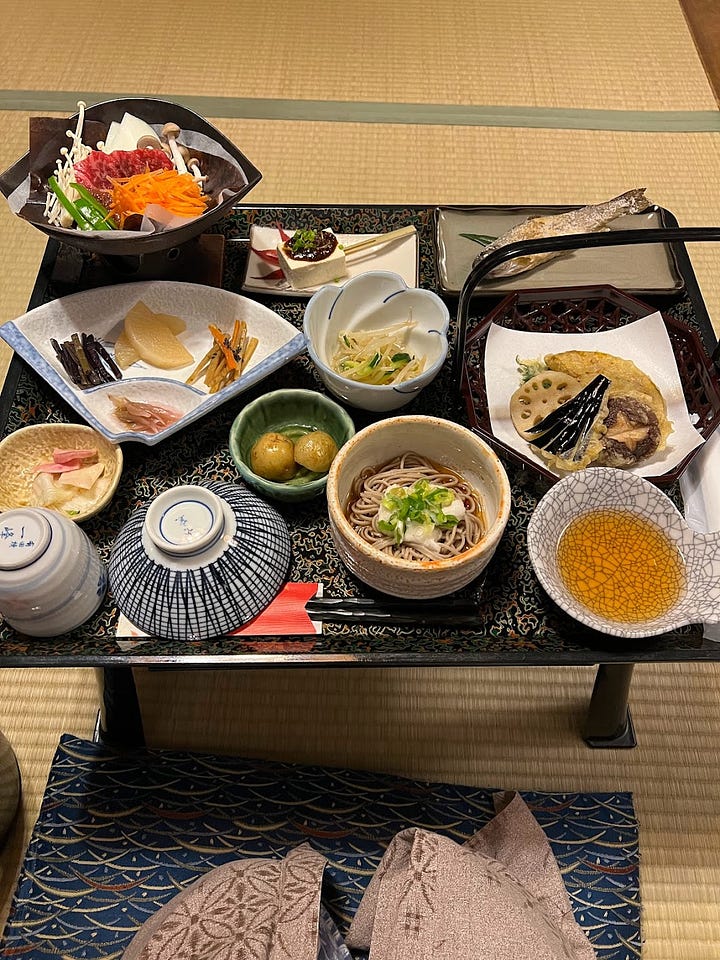
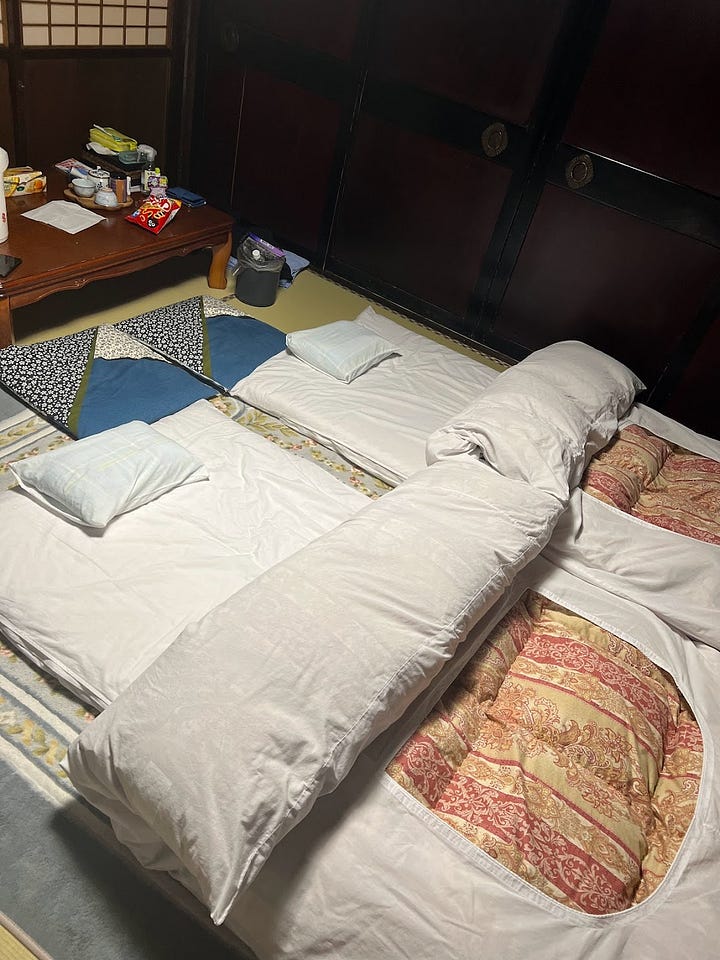
Note that most if not all minshuku will feature shared bathrooms, futons on tatami floors and sliding paper doors - so there isn’t much by way of privacy, and in a village like Shirakawa-go you’re basically expected to go to your room and be quiet / go to sleep after dinner! The best place to find traditional ryokan or minshuku accommodation is Japanese Guest Houses, which is where I booked Kanjiya (at fairly short notice as well!)
Where we stayed in Shirakawa-go
Minshuku Kanjiya: located in Shirakawa-go proper, this farmhouse B&B offers a comfortable stay, with exquisite dinner / breakfast included. We had thick futons and an in-room heater to stave off the cold, and all the facilities were squeaky clean and well-stocked with essential amenities.
Day 5: Shirakawa-go
We woke up early and enjoyed some tea on Kanjiya's terrace before filing into the dining room (sat crossed-legged, at traditional lacquered low tables) for our incredible breakfast spread. Then, having exhausted pretty much everything Shirakawa-go had to offer, we hopped back into our rental car to drive towards Kanazawa where the shinkansen would take us back to Tokyo.

